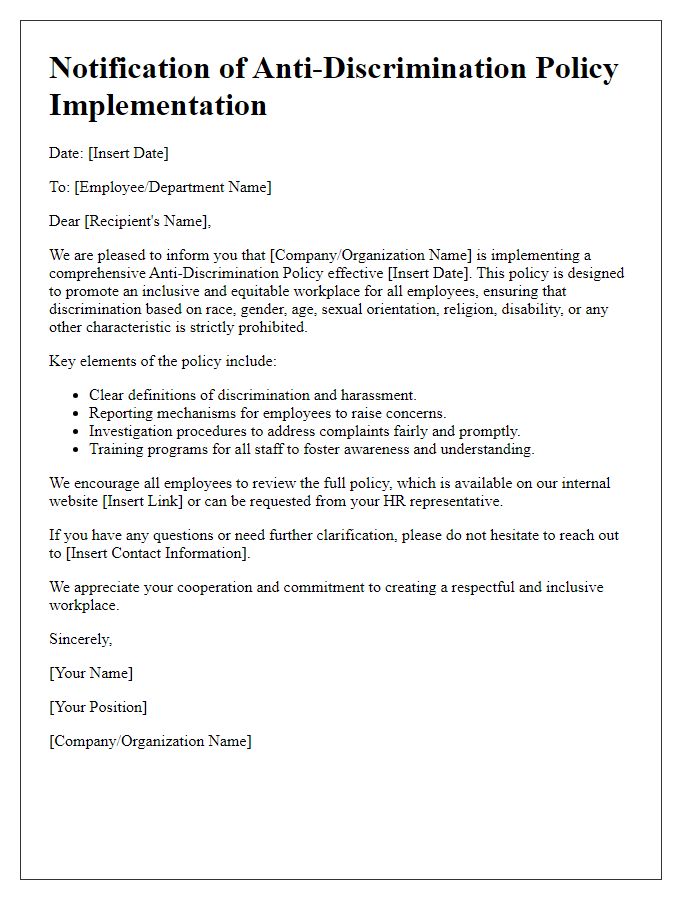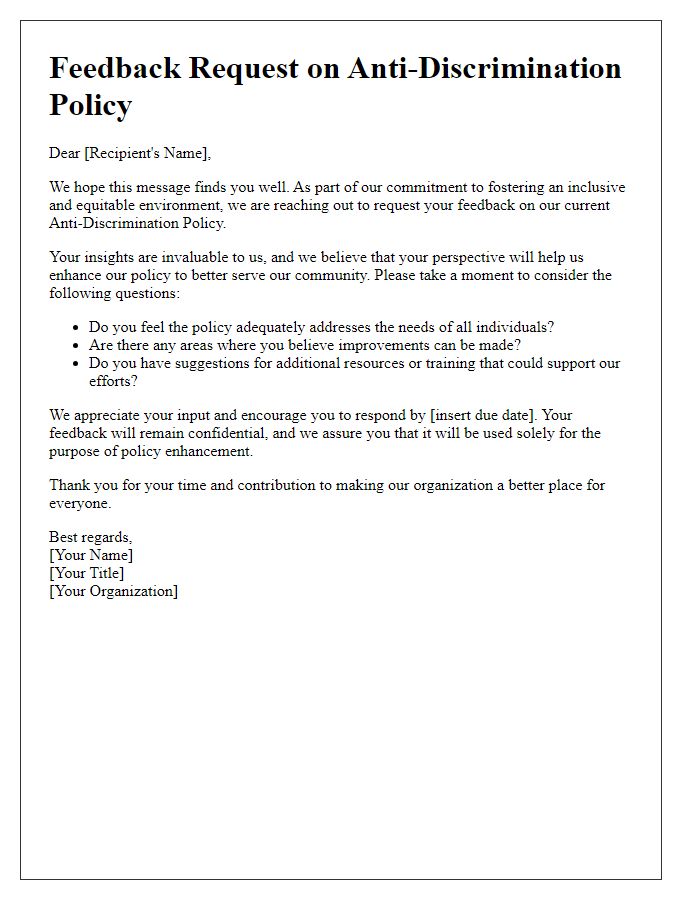In today's diverse society, crafting a thoughtful anti-discrimination policy statement is crucial for fostering an inclusive environment. These statements not only reflect an organization's values but also serve as a vital tool for guiding behavior and decision-making within the community. By addressing issues such as racism, sexism, and discrimination based on various identities, we can create a culture of respect and understanding. Ready to explore how to develop an impactful policy statement? Let's dive deeper into this important topic!

Clear Definition of Discrimination
Discrimination, defined as the unjust or prejudicial treatment of individuals based on attributes such as race, gender, age, sexual orientation, disability, or religion, undermines workplace equity and inclusivity. This practice manifests in various forms, including unequal pay, biased hiring processes, and exclusionary policies. Systematic discrimination often results in significant disparities, highlighted by studies revealing that minority groups face a 30% higher likelihood of being overlooked for promotions. Implementing clear anti-discrimination policies is essential for fostering a respectful work environment and ensuring compliance with legal frameworks such as Title VII of the Civil Rights Act of 1964. Organizations must actively promote awareness and provide training to mitigate discrimination risks and build a diverse and equitable workforce.
Commitment to Diversity and Inclusion
A robust anti-discrimination policy is essential for fostering a workplace environment that embraces diversity and actively promotes inclusion among all employees. This policy outlines the organization's unwavering commitment to ensuring equal opportunity in employment regardless of race, gender, age, sexual orientation, religion, or disability. It encompasses comprehensive training initiatives aimed at educating staff about the importance of respecting individual differences and creating a supportive culture. Regular assessments will be conducted to monitor diversity metrics within the workforce and identify areas for improvement. Additionally, the policy will establish clear reporting mechanisms for individuals who experience or witness discrimination or harassment, promoting a safe atmosphere for all employees. Organizations will also strive to ensure that recruitment processes reflect diverse candidate pools, facilitating equitable hiring practices that align with the core values of respect and inclusion.
Reporting and Complaint Procedures
Anti-discrimination policies within organizations serve to promote equality and prevent discrimination based on race, gender, age, sexual orientation, disability, or other characteristics defined by law. Effective reporting procedures ensure employees can voice concerns about discriminatory behavior without fear of retaliation. Complaints can be formally submitted to a designated human resources representative or through an anonymous reporting hotline. Federal laws such as the Civil Rights Act of 1964 and the Americans with Disabilities Act mandate these procedures to protect all employees in workplaces across the United States. Clear guidelines detailing the investigation process, response timeframes, and potential outcomes reinforce a commitment to creating a safe, inclusive environment. Training sessions are often implemented to educate staff on recognizing and addressing discriminatory actions, fostering awareness and prompt action against violations.
Steps for Addressing Violations
The anti-discrimination policy in organizations like educational institutions or workplaces outlines crucial steps for addressing violations. Initial reporting mechanisms (such as confidential hotlines or designated personnel) should be established for individuals experiencing discrimination or harassment. The organization must ensure that all reports are taken seriously, documented thoroughly, and investigated promptly within specific timeframes (often 30 to 60 days). Trained investigators must analyze the evidence, conduct interviews, and maintain confidentiality during the inquiry process. Following the investigation, clear communication of the findings is essential, along with appropriate disciplinary actions for violations (which may include warning, suspension, or termination depending on severity). Additionally, organizations should implement preventive measures, such as mandatory training sessions on diversity and inclusion for all staff and regular reviews of the effectiveness of the anti-discrimination policies. Resources should be made available for affected individuals, including counseling services and support groups, ensuring a safe and inclusive environment.
Legal Compliance and Updates
The anti-discrimination policy statement serves as a vital framework for organizations aiming to uphold equality and justice in the workplace. Legal compliance, grounded in federal laws like the Civil Rights Act of 1964 and the Americans with Disabilities Act, mandates the prohibition of discrimination based on race, gender, age, disability, and religion. Regular updates to this policy are essential to reflect changes in legislation, such as recent amendments introduced by the Equality Act, which seek to protect LGBTQ+ rights and expand the definition of protected classes. Organizations also need to implement comprehensive training programs that address implicit bias and promote inclusivity. In addition, monitoring mechanisms, such as anonymous reporting systems and regular audits, can help ensure adherence to the policy, fostering a culture of accountability and respect within the workplace environment.
Letter Template For Anti-Discrimination Policy Statements Samples
Letter template of anti-discrimination policy implementation notification

Letter template of employee anti-discrimination policy training invitation

Letter template of anti-discrimination policy complaint procedure outline











Comments